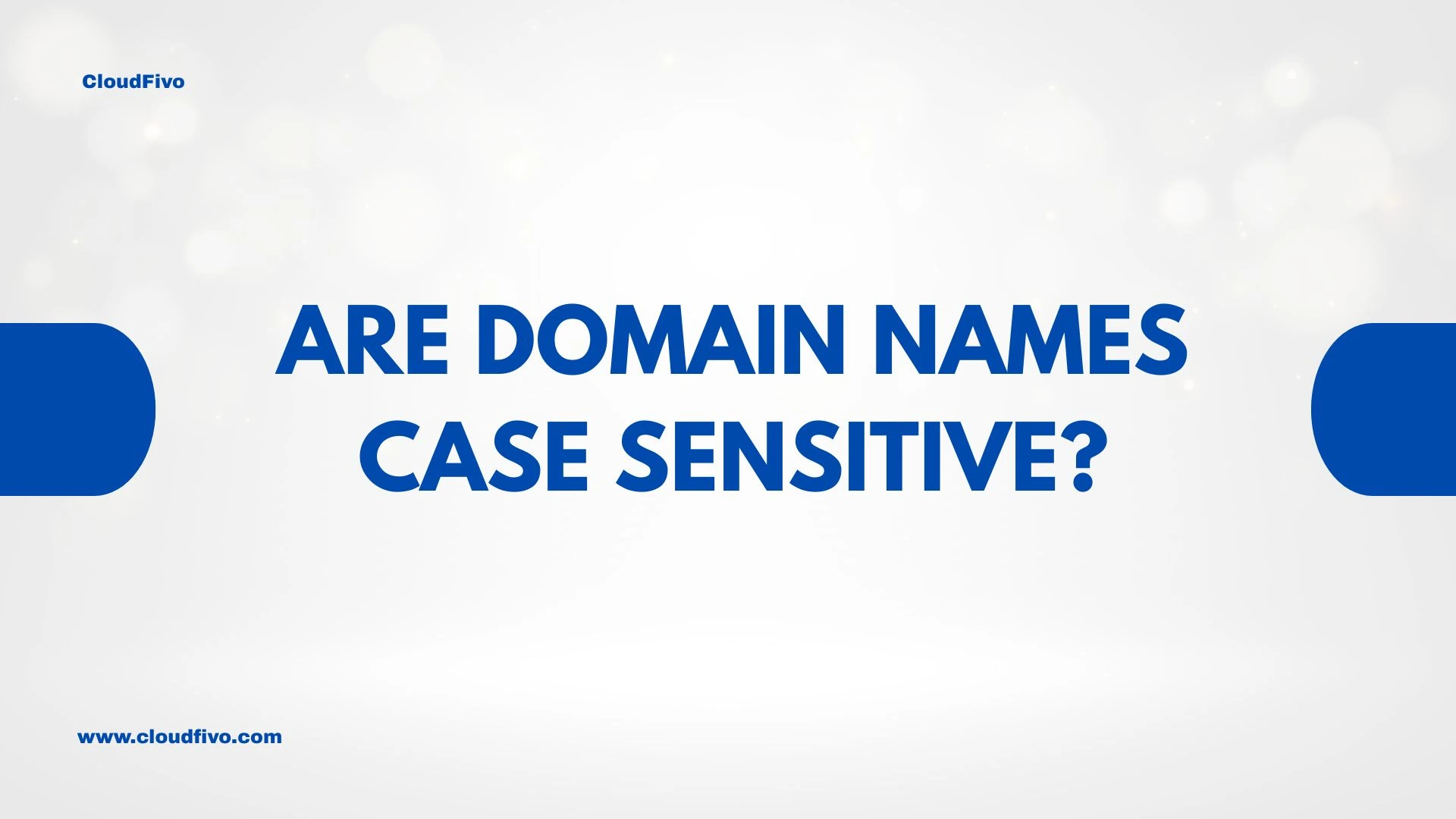
Are Domain Names Case Sensitive? The Simple Answer
You’ve done it. After hours of brainstorming, you’ve landed on the perfect name for your new business or blog. It’s catchy, memorable, and—miraculously—available. As you rush to register it, a small but nagging question pops into your head: does it matter if I use uppercase or lowercase letters?
In other words, are domain names case sensitive?
Will MyPerfectWebsite.com be the same as myperfectwebsite.com? What if someone types it in all caps on their phone? It’s an excellent question, and while the answer seems simple on the surface, the details are crucial for every website owner to understand. Getting this right from the start can save you from a world of broken links and user frustration down the line.
Let’s dive deep and get you a clear answer.
The Quick Answer: For the Domain Itself, No.
Let’s get the main question out of the way immediately. For the core part of your web address—the domain name itself—the answer is a resounding no. Domain names are not case sensitive.
That means that all of these variations will lead to the exact same place:
MyWebsite.commywebsite.commYwEbSiTe.comMYWEBSITE.COM
This is by design. The Domain Name System (DNS), which acts as the internet’s global address book, was built to be user-friendly. It automatically treats uppercase and lowercase letters as identical to prevent confusion and ensure that users find the site they’re looking for, regardless of how they type it. Imagine the chaos if Amazon.com and amazon.com were two different websites!
But Beware: The REST of the URL Can Be a Minefield
Here is the critical distinction that trips up so many people. While the domain name isn’t case sensitive, everything that comes after the .com (or .net, .org, etc.) absolutely CAN be.
This part of the URL—the path, the filenames, the folders—is handled not by the global DNS system, but by the specific server your website is hosted on. And here’s the key: the vast majority of web servers in the world run on a Linux-based operating system. In the world of Linux, case matters. A lot.
To a Linux server, photo.JPG and photo.jpg are not the same file. They are two completely distinct, separate files.
A Real-World Scenario: The Broken Link Catastrophe
Let’s make this tangible. Imagine you’re a photographer and you’ve just uploaded a beautiful new picture to your portfolio. The filename is Paris-Sunset.JPG.
You then create a new blog post and link to that image. But when you create the link, you accidentally type it in all lowercase: .../paris-sunset.jpg.
- What you see: Everything looks fine in your editor.
- What your visitor sees: A frustrating broken image icon or a “404 Not Found” error page.
Why? Because your link is pointing to paris-sunset.jpg, but the actualL:
- on the server is named
Paris-Sunset.JPG. The server looks for the lowercase version, can’t find it,- tells the browser the content is missing. This can happen with pages, PDF files, images—any file on your server. It’s a silent error that can make your website look unprofessional and broken.
How Case Sensitivity Can Silently Hurt Your SEO
Beyond just frustrating users, inconsistent capitalization in your URLs can also create headaches for your Search Engine Optimization (SEO).
While Google is smart enough to know that
MyWebsite.comandmywebsite.comare the same, it can get confused by different capitalizations in the rest of the URL. For example, if you have links on your site pointing to both:mywebsite.com/Our-Services/ryomywebsite.com/our-services/nsGoogle might see these as two separate pages with identical content. This can lead to a “duplicate content” issue, where Google isn’t sure which page is the “correct” one to show in search results. This can dilute your ranking power, as links and authority might be split between the two versions. While there are technical ways to fix this (like using canonical tags), the easiest solution is to never create the problem in the first place.
for your website. If you’re still br for Everythingainstormin every single one of these potential problems—broken links, confused users, and SEO headaches—the solution is incredibly simple. Just follow this one golden rule:
Always, and only,omain here.
- tells the browser the content is missing. This can happen with pages, PDF files, images—any file on your server. It’s a silent error that can make your website look unprofessional and broken.
For more simple answers to technical questions, check out our blog or learn more about us and
